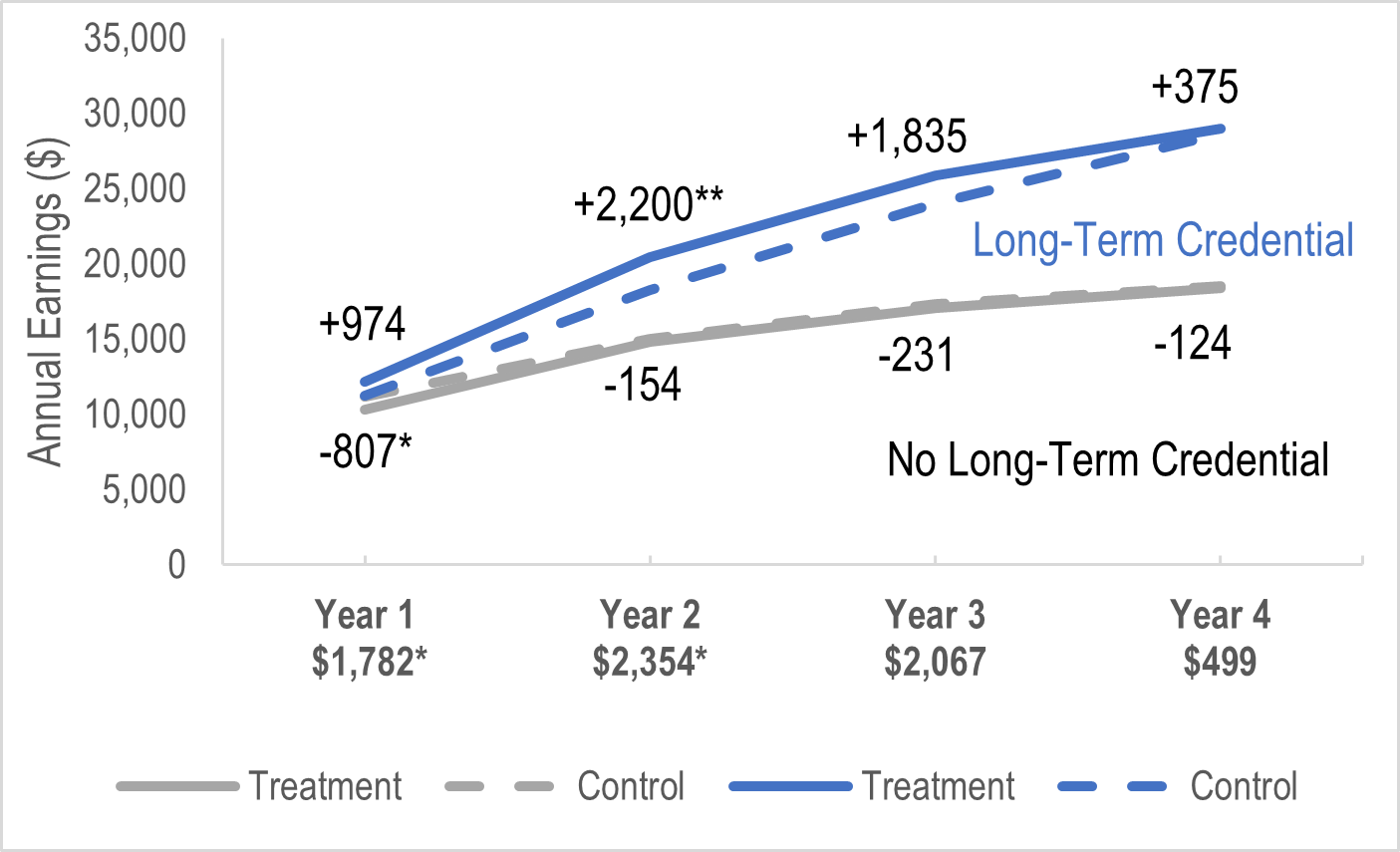How Do the Impacts of Healthcare Training Vary with Credential Length? Evidence from the Health Profession Opportunity Grants Program
Daniel Litwok, Laura R. Peck, and Douglas Walton
How do the earnings impacts of healthcare training vary?
This article explores how earnings impacts vary in an experimental evaluation of a sectoral job training program. We find that over the first two years in the study, those who completed long-term credentials (defined as college degrees or certificates that require a year or more of classes to earn) had program impacts that were about $2,000 larger per year than those who did not complete long-term credentials (whether they completed a short-term credential or no credential at all). A possible explanation for this finding is that those who earned a long-term credential had different experiences in the program, including more engagement with support services, and different post-program outcomes, such as greater employment in high-wage healthcare occupations like registered nurse.
Impact of Healthcare Training on Annual Earnings by Receipt of Long-Term Credential (n=13,440)

Notes: The graph shows impacts on annual earnings separately by subgroup (e.g., those in the treatment group who actually earned long-term credentials as well as their control group counterparts who would have earned long-term credentials if they were offered access to HPOG). The graph’s x-axis reports the difference in impacts for each year in the study. Statistical significance denoted as follows: * p<.10; ** p<.05.
What is the Health Profession Opportunity Grants Program?
The Health Profession Opportunity Grants (HPOG) Program supports education and training for adults with low incomes in the United States. The program focuses on healthcare jobs that pay well and are expected to experience labor shortages or be in high demand. The HPOG program model offers a series of progressively-higher education and training steps that result in industry-recognized credentials (e.g., Certified Nursing Assistant à Patient Care Technician à Licensed Practical Nurse). When combined with support services and partnerships with local employers, the program is hypothesized to improve labor market outcomes. This model is known as the “career pathways framework.”
How did we do this study?
An experimental evaluation of HPOG shows that access to HPOG improved rates of completion of certificates, credentials, and degrees; but those gains in education did not translate to gains in average earnings for the full sample. We explore whether that null earnings impact masks differences in impacts across subgroups.
Our approach uses baseline characteristics to predict whether study participants in both the treatment and control groups would receive a long-term credential if they were offered access to HPOG. Within these predicted groups, we estimate the impact of HPOG by comparing earnings for those offered HPOG to those in the control group. We then convert those impacts to reflect the study participants who actually did and did not earn long-term credentials. This conversion assumes that impacts within each subgroup are determined by the different program experiences (rather than anything external to the program, such as the different profiles of individual characteristics in each subgroup).
Full Article Citation:
Litwok, D., Peck, L. R., & Walton, D. (2022). How Do the Impacts of Healthcare Training Vary with Credential Length? Evidence from the Health Profession Opportunity Grants Program. Journal of Research on Educational Effectiveness. https://doi.org/10.1080/19345747.2022.2128486.
